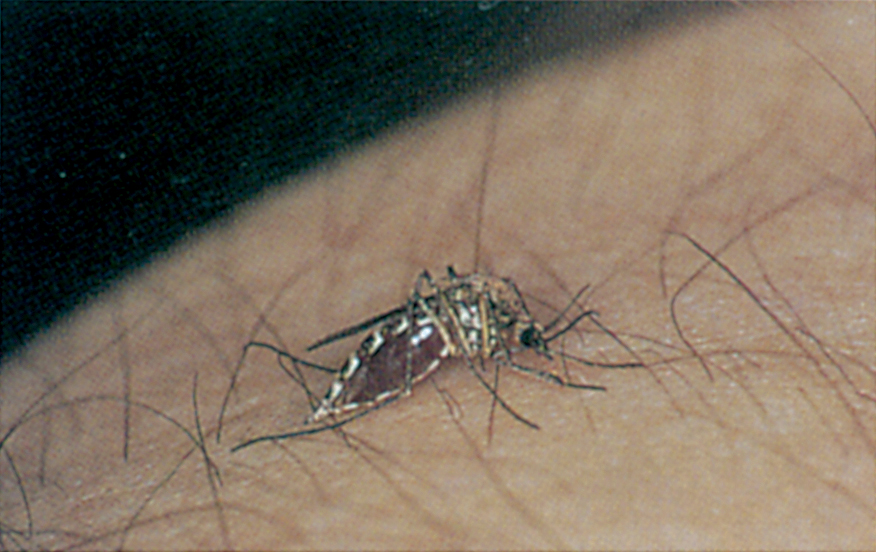Parasitism is very common in the animal kingdom. It has been estimated that about a quarter of the existing animal species live in or on the remaining three-quarters.
The words bite and sting are often used indiscriminately, but it is best to say that an animal bites when it uses its mouth, even when this is modified to form a sucking proboscis, and that it stings with a special organ, the sting, which is normally situated at the rear end.
When one animal bites another, it does so to obtain food, either by sucking blood as a mosquito does, or by killing the prey and consuming the contents of its body, as is done by the predacious fly bug Reduvius personatus among others. On the other hand, animals with a sting use this as a weapon, either for attack or defence, as for example in the hornet.
For an animal that sucks blood it is normally in its own interest that it should do so with as little disturbance as possible. The sucking proboscis is normally a delicate structure consisting of two tubes, one very thin down which saliva passes and the other a little larger through which the blood mixed with saliva is sucked up. The saliva may contain substances which prevent the blood coagulating and it may also contain substances that act as a local anaesthetic. The inflammation and itching that follow a bite are probably due to the foreign proteins in the saliva introduced by the biting animal. Humans react very differently to bites, some swelling to an alarming extent, while others scarcely react at all.
The position is very different in animals that sting their prey or sting in self-defence. Here the victim is usually paralysed or rendered incapable of resistance. In such cases the sting• usually has associated glands which produce a venom, that is, a substance which even in very small amounts can kill or paralyse other animals or cause them pain.
In view of the fact that people react so differently to bites and stings it is almost impossible to identify immediately the causative organism. There is also a possibility that bites may be confused with pimples or other reactions due to hyper- sensitivity. In many cases, it is possible that other factors may help to identify the cause, as for example the position of the bite. It is also as well to note the time of the attack, whether domestic animals might be involved, and whether there have been other opportunities for parasites to enter the house.





